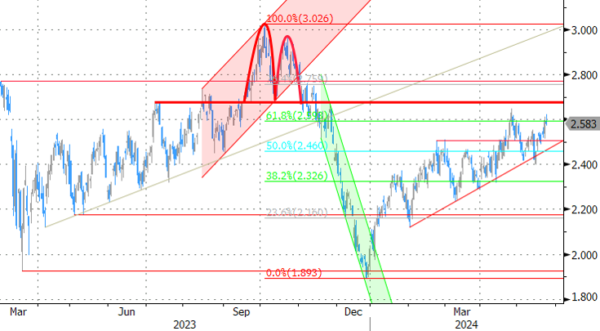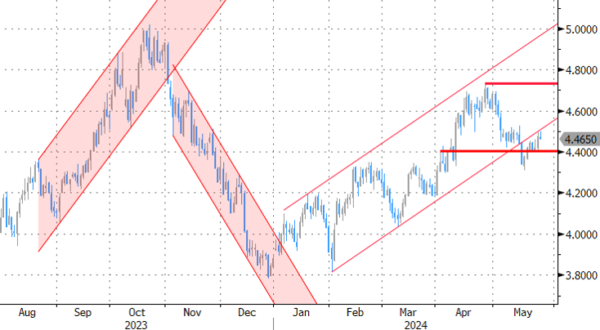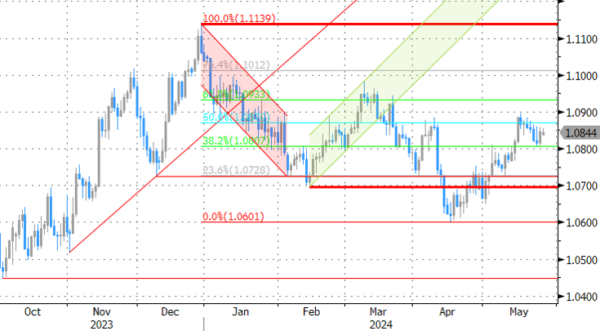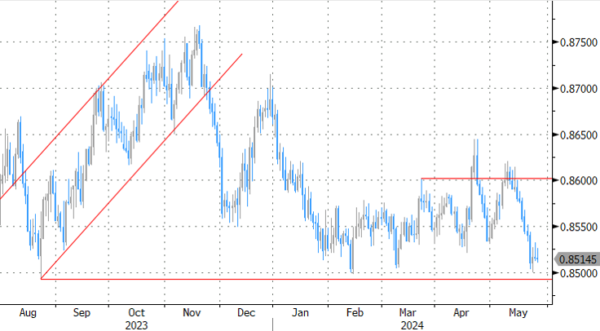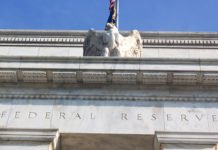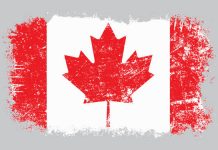Markets
With investors looking ahead to a long weekend in the US and the UK; the upleg in core yields slowed on Friday. US and EMU yields closed with changes of less than 1.5 bps across the curve. US durable goods orders (+0.7% M/M) and core shipments (+0.4% M/M) printed stronger than expected, but coming after a downward revision of the March figures. Inflation expectations from the U. of Michigan consumer confidence survey faced a downward revision as well and helped to soften the yield rally. Fed’s Waller elaborated on the topic of a potentially higher neutral US interest rate. This topic will remain in focus as a further rise of the neutral estimate in the June dots is very much possible. Especially in a context where disinflation slows, this might fuel the debate whether Fed policy is tight enough to bring inflation back to target in a timely manner. The Minutes of the May meeting earlier last week showed that the FOMC wasn’t that sure that policy indeed shouldn’t be tightened any further. After last week’s repositioning, US markets now again scaled back the possibility of a September Fed rate cut to about 50%, with markets also seeing only one rate cut this year. The German 2-y yield and EMU 2-y swap rate finished the week at a YtD closing peak. An ECB June rate cut is not put into question anymore, but strong PMI’s and higher than expected Q1 negotiated wages published on Thursday, suggested that the room for follow-up easing might be limited in H2. Equities showed resilience despite the ‘hawkish repositioning’ in bond markets last week. A bearish engulfing pattern on US indices on Thursday didn’t trigger any further follow-through losses. The Nasdaq even rebounded 1.1%. The dollar gained ground last week, but momentum dwindled end last week. EUR/USD still finished the week at 1.0847. So the 1.0895 correction top still isn’t that far away.
Trading probably will take a slow start as US (Memorial Day) and UK markets (Spring Bank Holiday) are closed. German Ifo Business climate should confirm last week’s positive PMI’s and might provide further downside protection for EMU yields and the euro, admittedly in thin market conditions. Later this week, markets will keep a close eye at the April US PCE deflators and the first estimate of the EMU May inflation. US PCE deflators (headline and core) are expected to stabilize at 0.3%, confirming the message from the CPI published earlier this month. EMU (headline) inflation is expected at a modest 0.2% M/M, but unfavourable base effects still might lift the Y/Y measures (2.5% headline, 2.8% core). For now, we don’t see much of a trigger for markets to reverse the recent higher-for longer repositioning. Better EMU eco data also keep EUR/USD near the topside of the 1.0725/1.09 ST trading range.
News & Views
BoJ governor Ueda in an opening speech to a BoJ-hosted conference in Tokyo said Japan has progressed in lifting inflation expectations after a long period of deflation and ultra-easy monetary policy. He said the central bank will proceed cautiously to achieve 2% inflation, a target which is now being overshot for about two years in the wake of the pandemic and supply-side shocks. Ueda explained a gradual approach is necessary because “The absence of significant interest rate movements poses a considerable obstacle in assessing the economy’s response to changes in interest rates,” referring to the extreme difficulty of estimating the country’s level of the neutral rate. The BoJ ended negative rates back in March and is seen hiking modestly further later this year. Japan’s 10-yr yield also topped 1% last Friday amid rising speculation the central bank will soon begin to taper its bond-buying programme. The BoJ is also under pressure from the historically weak yen. Despite the prospect of further monetary normalization, the spread with the likes of the US remains huge. USD/JPY currently trades just south of 157.
France’s PM Attal released a plan to reduce French jobless benefits as he tries to bring traction to president Macron’s economic reforms. The main goal of cutting the maximum duration of welfare to 15 months from 18 months and lengthen the period of work required to qualify for benefits is to get more people into jobs. It also comes with gradual lower government spending over the next few years. France’s high debt burden and budget deficits are in the spotlights recently with the IMF last week issuing a stark warning to bring things under control. Rating agencies have been highlighting the issue as well. France dodged two bullets end April with Moody’s and Fitch keeping the rating unchanged and the outlook stable. But S&P makes an assessment May 31 and holds a negative outlook.
Graphs
GE 10y yield
ECB President Lagarde clearly hinted at a summer (June) rate cut which has broad backing. EMU disinflation continued in April and brought headline CPI closer to the 2% target.. A more bumpy inflation path in H2 2024, the EMU economy gradually regaining traction and the Fed’s higher for longer US strategy make follow-up moves difficult. Markets have come to terms with that.
US 10y yield
The Fed in May acknowledged the lack of progress towards the 2% inflation objective, but Fed’s Powell indicated that further tightening was unlikely. Soft US early month data triggering a correction off YTD peak levels. However, the Fed minutes still showed internal debate whether policy is restrictive enough. Sticky inflation suggests any rate cut will be a tough balancing act. 4.37% (38% retracement Dec/April) already proved strong support for the US 10-y yield.
EUR/USD
Economic divergence, a likely desynchronized rate cut cycle with the ECB exceptionally taking the lead and higher than expected US CPI data pushed EUR/USD to the 1.06 area. From there, better EMU data gave the euro some breathing space. The dollar lost further momentum on softer than expected early May US data. Some further consolidation in the 1.07/1.09 are might be on the cards short-term.
EUR/GBP
Debate at the Bank of England is focused at the timing of rate cuts. Most BoE members align with the ECB rather than with Fed view but slower than expected April disinflation and a surprise general election on July 4 complicated matters. A June cut in line with the ECB looks improbable. Sterling extends a recent bull rally. A test of EUR/GBP’s 2024 YtD low (0.8489) is possible. We expect this important support level to hold.




